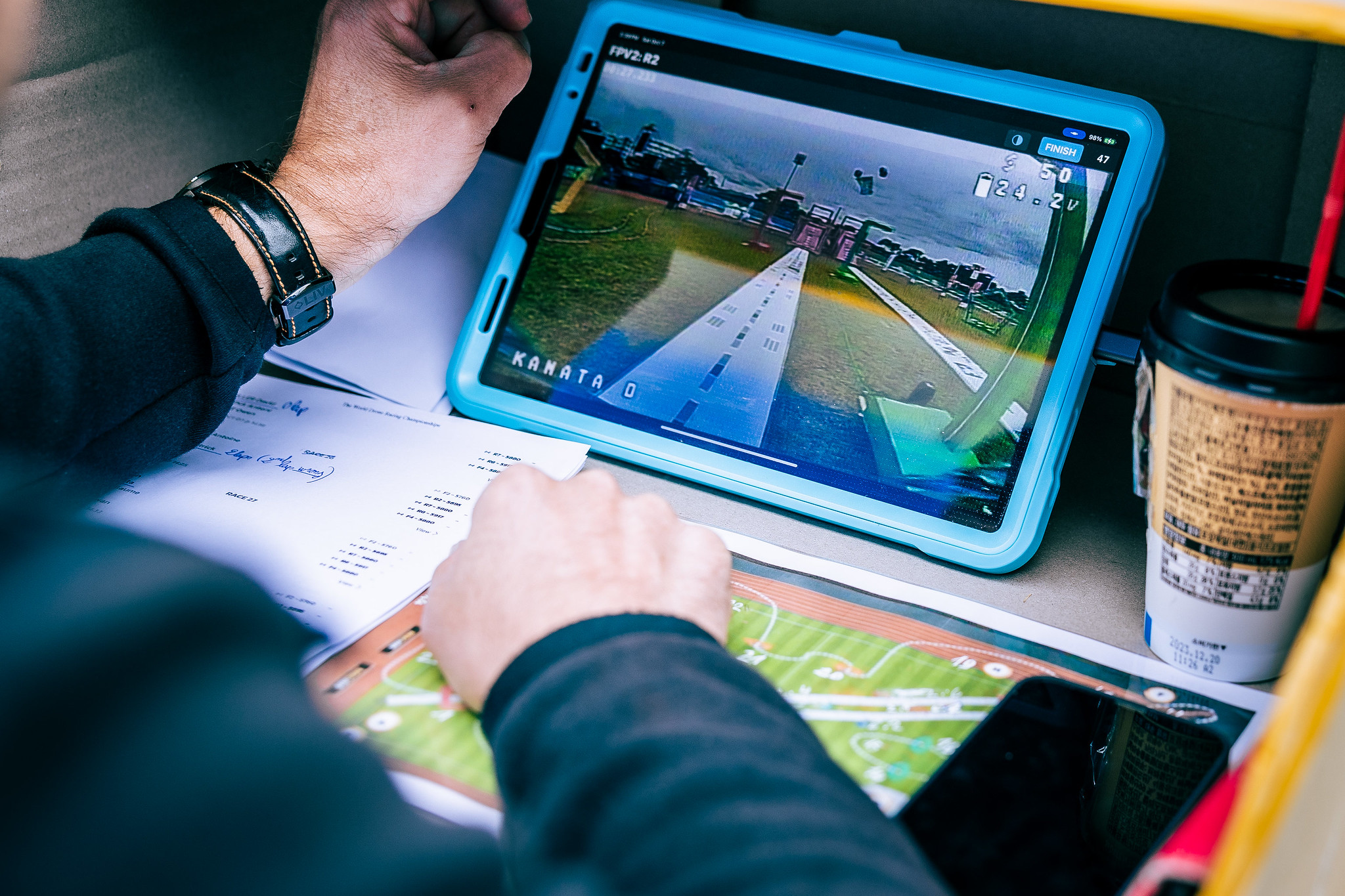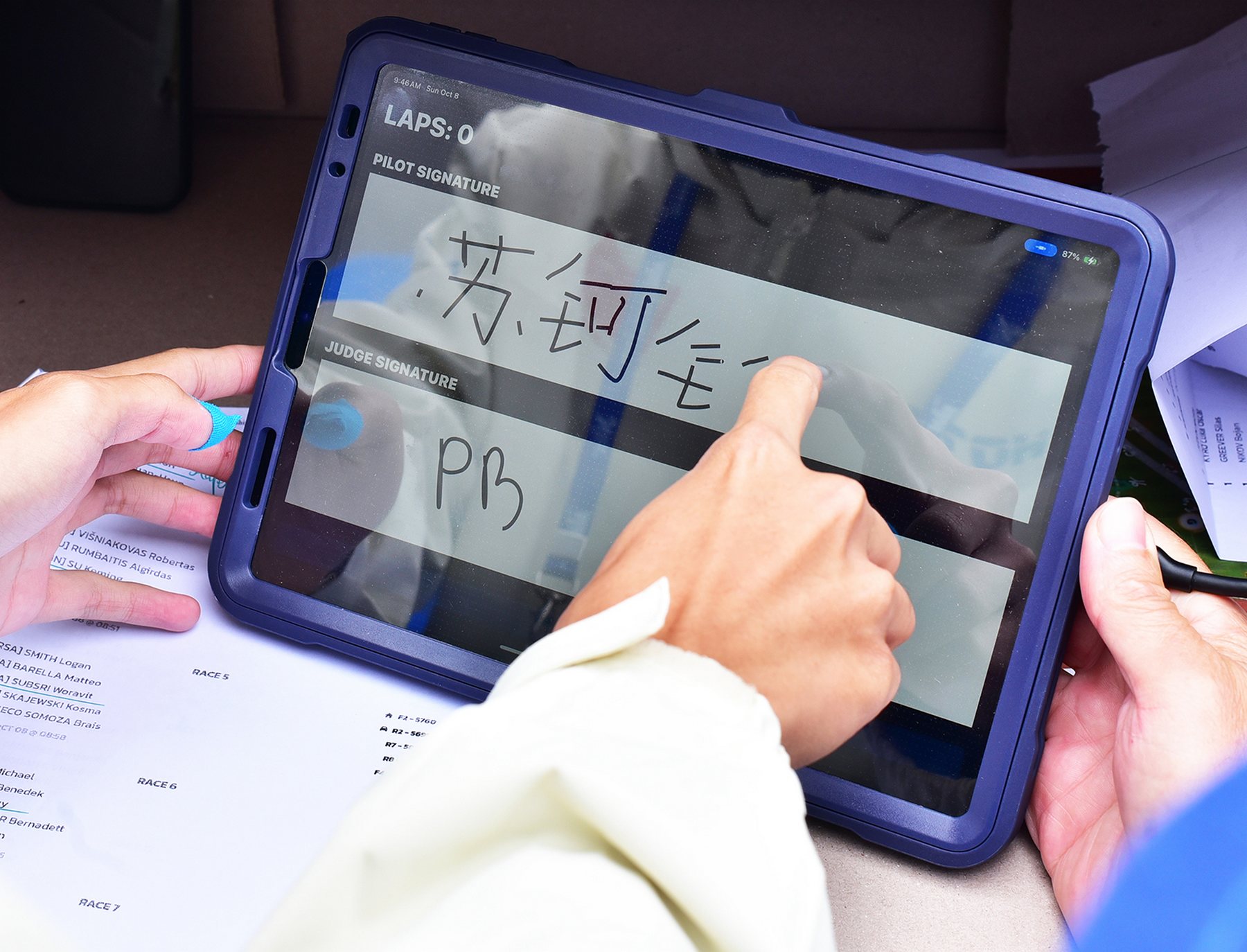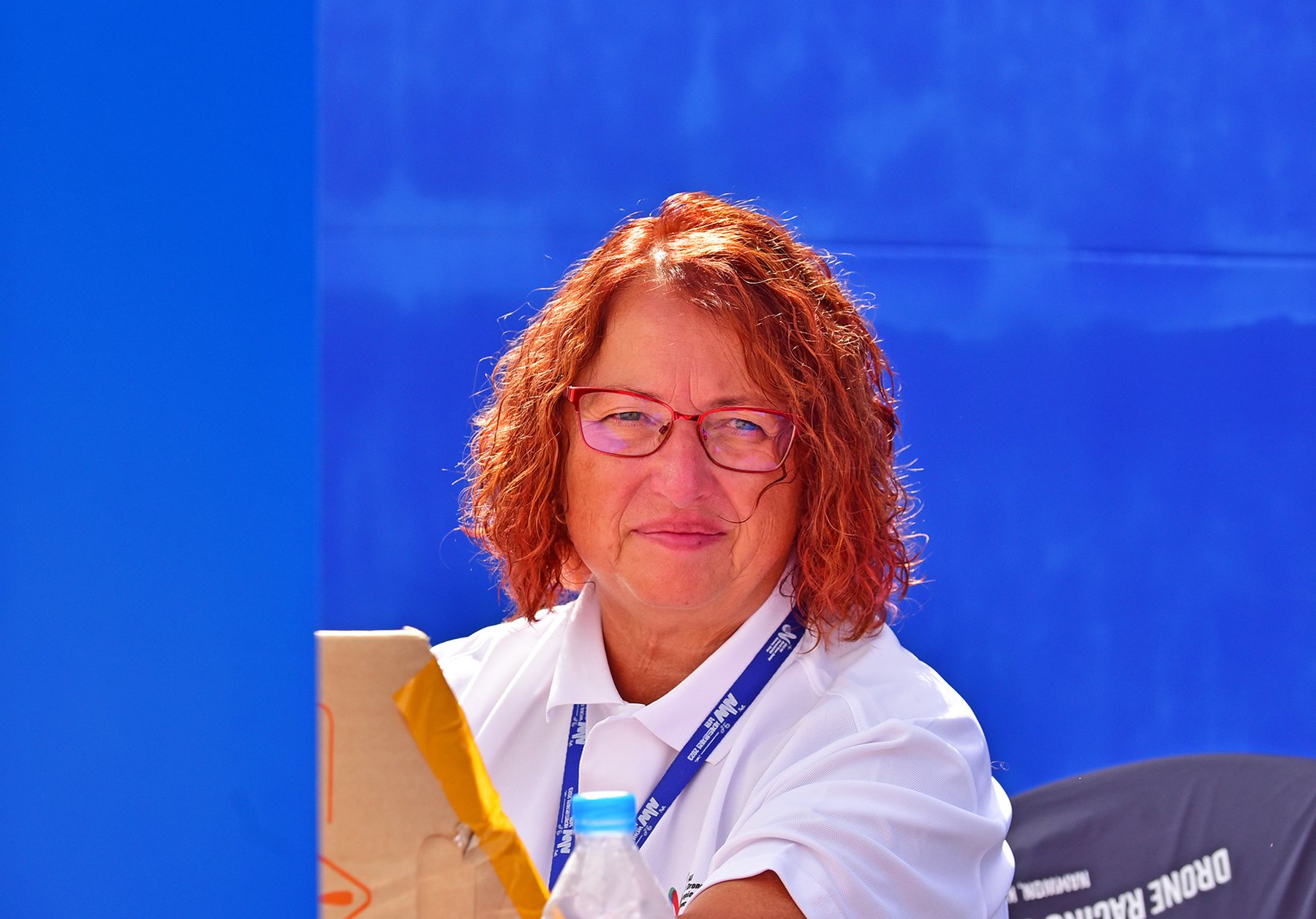Drone Racing Judges: Ensuring Fairness in High-Speed Competitions

At the recent 2023 FAI World Drone Racing Championship in Namwon, Korea, the world’s best pilots captivated the audiences with their adrenaline-fuelled style of flying and incredible skills. While the natural focus is on the competitors and the action, there is a group of people who play a crucial role behind the scenes: the judges. These dedicated people are essential to ensure fair competition by upholding the rules and evaluating the pilots’ performances.
The Role of Drone Racing Judges
Judges are a vital component of any Drone Racing event, just as they are of all competitions sanctioned by the FAI Aeromodelling Commission (CIAM).
In this specific discipline, they must make sure pilots follow the exact track, cross all designated gates, and meet other technical requirements specified in the rules. To accomplish their mission, they must possess a thorough understanding of the current rules and procedures of the sport, using technology to evaluate pilot performance and enforce penalties when necessary.

Judges use tablets to see the races real-time
During races, each competitor is assigned a judge who sits behind them with a tablet or monitor to have a real-time view from the drone’s on-board camera. This perspective allows the judges to have the same view of the race as the pilot watching from his goggles. Yet judging is still no easy task, considering the incredible speeds at which the drones fly (often at more than 160 km/h). The judges must exercise utmost attentiveness to evaluate the pilot’s performance .
Real-time and video evaluation
At World Championships such as in Namwon, six international judges officiate, plus a Supervisor Judge who coordinates with all judges and works as the “liaison” between them and the people in charge of the IT systems. At competitions other than the World Championship, such as World Cup competitions, the setup is simpler but the duties and responsibilities remain the same.

A kind of server where all the video recordings are stored. It captures the videos from the on-board cameras. It stores the videos for further check if needed but also transfers the videos to the tablets of the judges.
Upon completion of a flight, judges communicate any potential mistakes to the competitor or their helper. In cases where doubt arises, technology is the assisting tool which is used when needed to clarify the situation. Before making a decision on a pilot performance, judges can review critical instances of the flight by using dedicated video systems that record all flights.
These recordings allow judges to replay flights, analyse specific moments, and even use slow-motion playback, vital in such high-speed flights. There is pressure on the judges to provide evaluation swiftly to update results promptly and to allow the event to continue as per the schedule, without interruption. To finalise, both the judge and the competitor electronically sign off on the final score, thus confirming the score and the judge’s assessment.

Judges and Competitors sign off on the final score
In the event of a protest or further doubts regarding a judging decision, the Jury steps in to review the videos that remain available throughout the event before making a final decision.
A difficult task

Judge at work
While the competitors experience the thrill of flying for a limited period during an event, the judges work diligently throughout the day, following every race and evaluating each pilot's performance. Their role requires unwavering attention to detail, patience, and a deep love for the sport.
The evolution of technology
As technology advances, so does the equipment used in drone racing. The FAI Aeromodelling Commission teamed up with specialist IT companies to develop a whole new environment for this specific class with the aim of providing the judges with state of the art, easy-to-use applications which then are interfaced with the main scoring program.
Early stages of the sport predominantly featured analogue cameras, but the transition to digital cameras is well underway. The superior quality of digital cameras provides clearer and more precise images, thus helping the judges in their decision-making. It is expected that digital cameras will soon become the standard in drone racing competitions.

A drone and its camera
The Importance of experience and expertise
To judge at top-level events like FAI World Championships, one must possess extensive experience from national or open international competitions.
Aspiring judges can start by contacting the FAI Member in their country, which can provide them with the necessary information and guidance to embark on their judging journey.
Becoming a drone racing judge requires not only a passion for the sport but also a commitment to staying up-to-date with the latest rules and advancements. Judges must continuously educate themselves to ensure their decisions align with the evolving nature of drone racing.
Thank you!
This article is dedicated to all the judges for their hard work at FAI events and especially to the judges who were at the 2023 FAI World Drone Racing Championships:
Sotir LAZARKOV (Bulgaria)
Pascal BERLU (France)
Angelika MÖBIUS (Germany)
Eric LI-KOO (Great-Britain)
Chi Hung CHAN (Hong Kong)
Oscar CHINELLO (Italy)
Samson KIM (Republic of Korea)

Judge Angelika Möbius from Germany
Top picture: Model registration prior to the event. Italian Judge Oscar Chinello (left) with a local assistant. Credit: Antonis Papadopoulos
Photo credits: Antonis Papadopoulos; Yong-chan NAM/KAMA Korea
